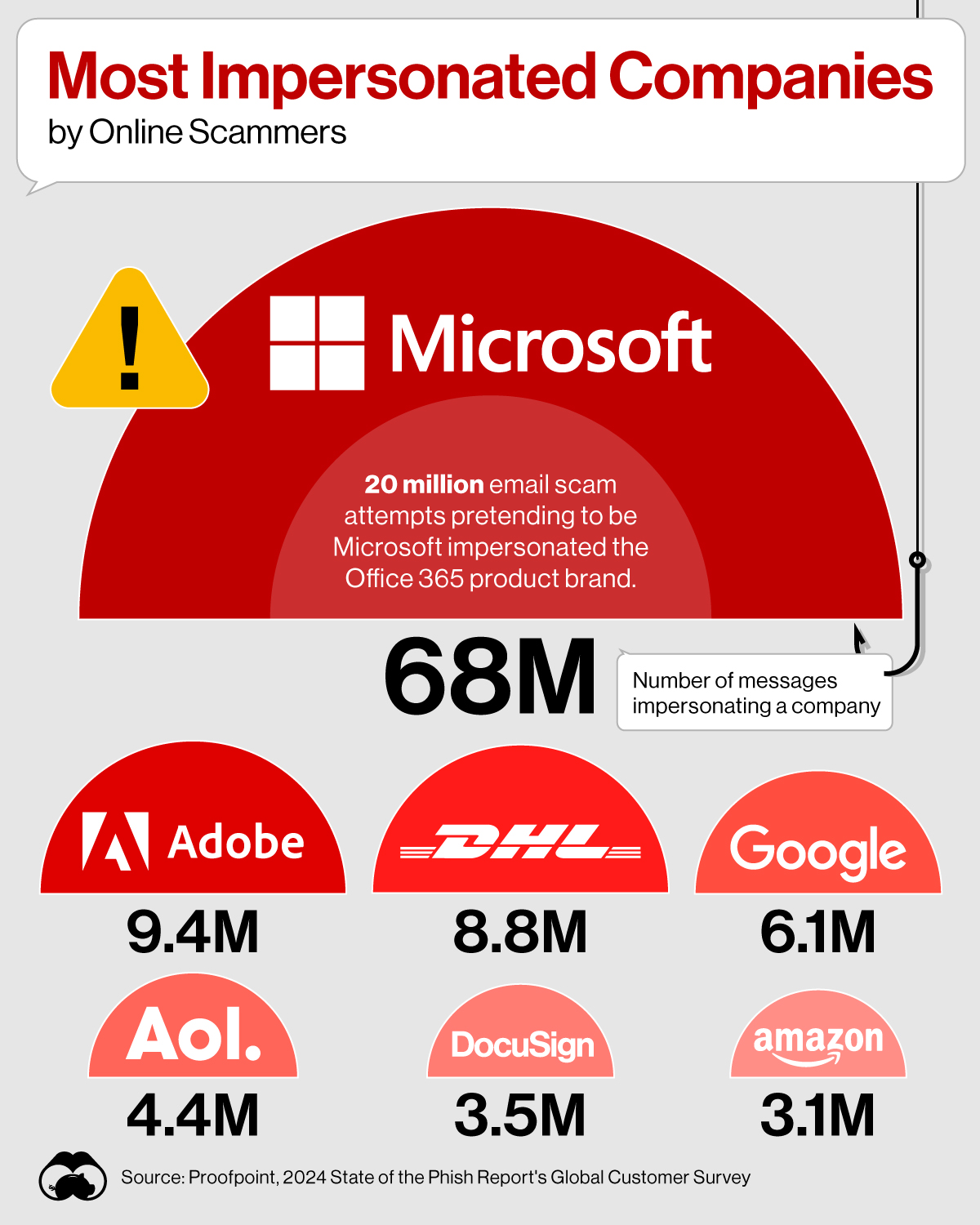Niccolo Conte
2024-05-30 19:54:25
www.visualcapitalist.com
![]() See this visualization first on the Voronoi app.
See this visualization first on the Voronoi app.
The Companies Online Scammers Impersonate the Most
This was originally posted on our Voronoi app. Download the app for free on iOS or Android and discover incredible data-driven charts from a variety of trusted sources.
Globally, online scams cost consumers and businesses billions annually through the use of increasingly sophisticated tactics that steal users’ data.
Often, this involves the use of “phishing”, which is when fraudsters send messages or emails impersonating a legitimate business requesting sensitive information. In fact, this type of attack is one of the most common types of cybercrimes, owing to its high efficacy.
This graphic shows the most commonly impersonated brands by online scammers, based on data from Proofpoint.
Tech Companies Stand as Prime Targets
As the table below shows, the most commonly targeted companies are tech companies, making up six of the top seven impersonated brands by fraudsters in 2023:
| Company | Number of Messages Impersonating a Company |
|---|---|
| Microsoft | 68.0M |
| Adobe | 9.4M |
| DHL | 8.8M |
| 6.1M | |
| AOL | 4.4M |
| DocuSign | 3.5M |
| Amazon | 3.1M |
Ranking as the top company overall, 68 million messages impersonated Microsoft, outpacing second-highest company, Adobe by a wide margin.
Often, these fraudulent emails feature subject lines such as “Outlook Info Replacement” or “Message Failure Delivery Notice”, luring recipients to click on embedded links. These links then take users to a counterfeit website mimicking the Outlook login page, prompting them to input their login details. Ultimately, disclosing these details presents a security risk to individuals and organizations.
Going further, Office 365 was targeted the most across all Microsoft products, being mimicked by 20 million email threats.
This highlights how fraudsters target trusted brands where they can apply tactics of “credential harvesting”. In this way, scammers can target a Microsoft 365 account, for instance, which will give them access to an email account and other personal data.
Ranking in third was DHL, with 8.8 million impersonated messages. By targeting the courier company, fraudsters prey on recipients who may be anticipating details on package deliveries. In many cases, online scammers trick people into clicking on a link that mimics the official website, aiming to steal customers’ login information or payment credentials.
The Growing Financial Burden of Online Scams
As cyberthreats grow in prevalence, the financial costs are increasing as well.
A separate report from the Federal Bureau of Investigation found that the cost of online scams increased 22% in 2023 compared to the previous year, surpassing a record $12.5 billion in America. Overall, phishing attacks were the top source of reported crimes by individuals, businesses, and organizations by far.
The post Visualizing the Companies Online Scammers Impersonate the Most appeared first on Visual Capitalist.
Source Link




































































